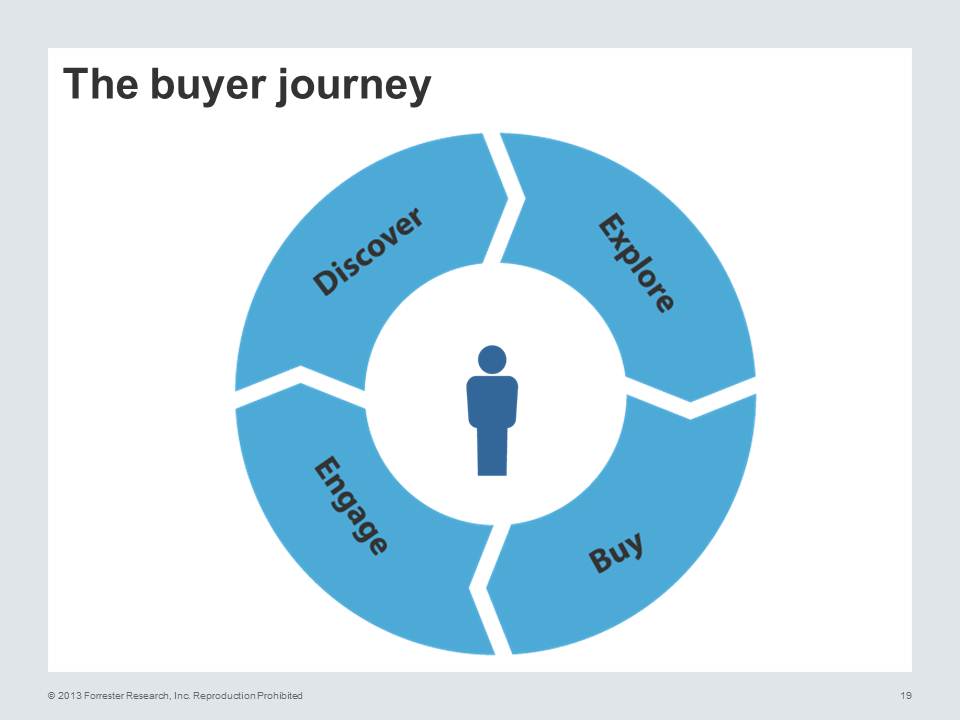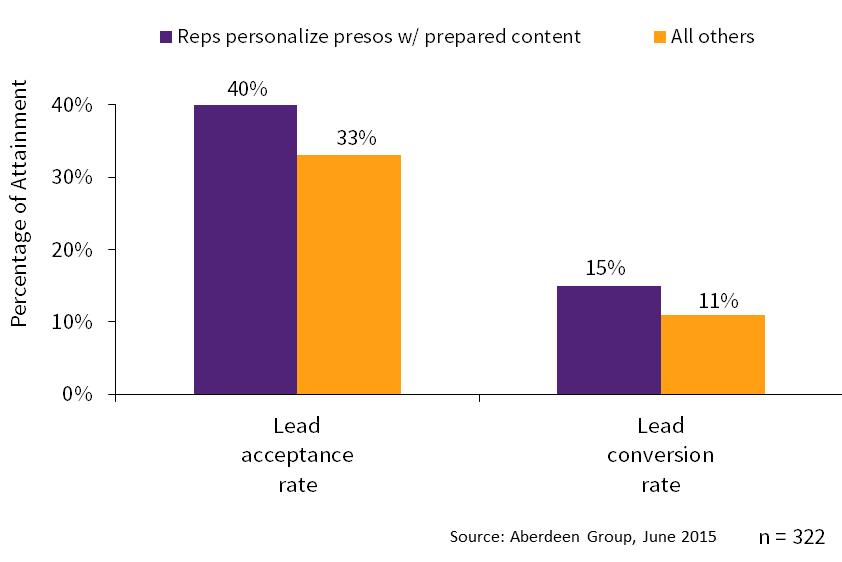The evolution of content marketing as a discipline has made content creation a core marketing function. At the top of the sales funnel, effective presentations and web site content generate leads and build awareness. Farther along in the buyer’s journey, finely tailored content such as case studies and white papers can help specific buyer personas build consensus for adoption of a vendor’s solution – shortening sales cycles and increasing the likelihood of a successful close.
That’s the ideal. The reality is that a lack of marketing and sales alignment often creates barriers to successful content marketing.
Research by SiriusDecisions shows that sales doesn’t even use 60 to 70% of marketing content. That means that about two thirds of marketing’s investment in content development — often as much as 12% of the entire marketing budget — can be going to waste. Content that should be impacting revenue by helping to close late-stage deals is just sitting unused.
How can marketing turn this around? How can you get sales to use the content that you spend valuable marketing time and resources developing?
To start, be sure you have a successful process set up with your sales organization for identifying, building, and using your content – before you start producing any content.
Below are 7 ways marketing can set up a better process with sales:
1) Know your buyer’s journey
Understand who the buyer is and the purchasing process – so you can produce marketing content that aligns with that buyer’s journey. Your reps need content that they can proactively use to overcome each obstacle in the buyer’s path to successful adoption. Do you know the primary buyer objections and how your sales team typically overcomes them? Do you know the different stages in your sales team’s buying process? Do you know what buyer actions move a lead from one sales stage to the next?
Understand the sales process specific for each buyer persona, and deliver content that supports that process. Create presentations that address the buyer’s challenges and potential solutions, such as case studies that describe realistic scenarios to be relevant to the rep and resonate with the buyer.
2) Be sure your content is buyer-centric
Sales executives surveyed by Sirius say that too much marketing content is product-centric — focused on selling product features. What sales really wants and needs is buyer-centric content — content that communicates value that’s matched to the needs of specific customer personas. Buyers need sales reps to help them understand how to solve a pragmatic business problem or exploit an opportunity – not just explain Feature A and Feature B.
3) Meet regularly with sales counterparts
At the very least, you need to be meeting monthly, and if you’re organization is smaller, even more frequently. Use meetings to share what’s working and what’s not. Be transparent about the content that’s being generated, allow the reps to give feedback – and listen. Why produce content they don’t want?
Additionally, marketing should regularly attend sales meetings, to share campaigns and content under development or newly updated content, and deliver the analytics data.
4) Make content easily accessible to sales
Make it easy for sales to get the content you’re producing. They should be able to get content right from their desktops. It should be easily accessed from whatever CRM tool they use. If they use cloud storage for materials, the repository should be able to pull content from cloud storage (like Box or Dropbox). Also, evolve in collaboration with sales a tagging and folder structure for content that makes it effortless for reps to find what they need, for each buyer persona and each stage in the buyer’s journey (each level of the sales funnel).
5) Understand the metric for success
Understand what sales leadership is directing the reps to do – e.g., make as many phone calls as possible, or send as many emails as possible. If the content doesn’t make it easier to hit the goal that gets measured, reps won’t see value in it.
6) Deploy sales analytics tools to see what’s working and what’s not
Sales analytics tools that integrate with marketing automation systems give marketing insight into what a rep is doing with their content. You can see what collateral reps are using most frequently – and the content they’re not using at all – and find out why. Is it because the content isn’t helpful, or because they don’t know it’s there?
Sales engagement analytics also reveal how prospects are interacting with your content.
You can see what attachments are downloaded, what pages are viewed and for how long. This visibility gives you understanding into what messaging resonates most with prospects – so you can adjust future content.
7) Realize that sales reps want to personalize content
Even today, sales is as much of an art as it is a science – and sales reps want to personalize their engagement to strengthen the customer relationship. Personalization builds trust. Indeed, Aberdeen Group has found that the best performing organizations enable sales reps to personalize content for their customers. Marketing can’t produce content to support thousands of different usage scenarios, but they can provide a library of content broken down – e.g., by industry or product feature or pain point — as well as guidance, a general overview of the story, and branding compliance instruction.
Using sales email templates that allow for personalization – with marketing-approved key messaging in the email body – can also help ensure consistency.
Stronger alignment around content brings more value to the business
Aberdeen Group research shows that organizations that closely align marketing and sales around creation and deployment of buyer-oriented marketing content experience 21% better lead acceptance rates and 36% higher average conversion rates than more loosely aligned companies.
Sales needs marketing to help buyers through the latter stages of their journey. Marketing needs to step up to the plate to:
- Build content that addresses specific buyer needs
- Put a process in place for content and communicate with sales – so they know it’s there and how to get it!
The keys include closer collaboration between these two functions, including regular face-to-face interaction. Remember, marketing may own the messaging, but sales generally has the most immediate knowledge of changing customer needs and pain points. Embrace both perspectives in content development, and deploy tools and analytics to facilitate a common marketing-sales process for content creation and use.
About the Author: Micheline Nijmeh is the CMO for LiveHive, Inc., whose award-winning sales acceleration platform provides deep buyer-based engagement analytics and automated email sequencing. A seasoned Silicon Valley executive, Nijmeh has served as Senior Director, Integrated Global Campaigns at Salesforce.com, where she led the market launch of Salesforce’s Chatter and Force platform.


